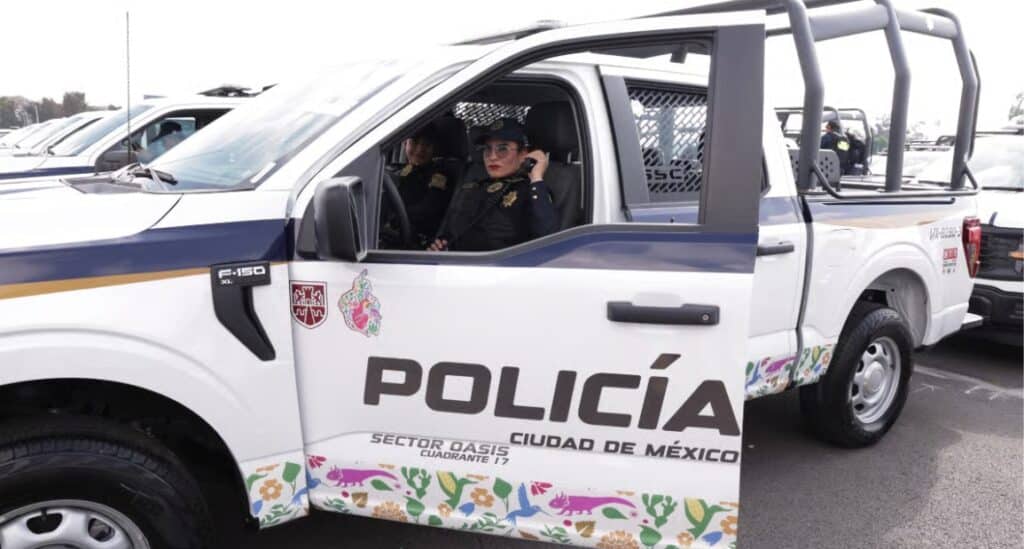- With nearly 3,500 newly equipped patrol vehicles, Mexico City takes a key step in strengthening its operational capabilities.
- Teltronic provides critical technology through TETRA terminals that enhance coordination and reduce response times.
Mexico City, July 28, 2025
In a city with over 9 million inhabitants, one of the highest urban densities on the continent, and a complex operational dynamic, ensuring an efficient police response remains a constant challenge. Although crime indicators in Mexico City have shown a downward trend — with a reduction of more than 66% in high-impact crimes and a 50% drop in homicides since 2019, according to the Public Safety Cabinet — the perception of insecurity among the population remains high, and the demand for greater police presence continues to be a central issue in public debate.
On July 24, 2025, the Head of Government, Clara Brugada Molina, and the Secretary of Citizen Security, Pablo Vázquez Camacho, led the official handover of 3,500 new patrol vehicles to the Mexico City Police. The initiative is part of the “La Policía Cerca de Ti” program and aims to strengthen the presence, proximity, and operational effectiveness of the security forces. According to the Secretariat of Citizen Security, the delivery contributes to fulfilling its institutional mission of protecting life, property, and the integrity of the population, while reinforcing preventive patrolling in strategic areas.

The strategy includes fleet modernization and the expansion of quadrant-based patrolling, with the goal of increasing territorial coverage and reducing response times. The units were distributed across the city’s 1,020 operational quadrants and personalized with local visual elements such as neighborhood names and illustrations of urban wildlife. The program also included the installation of 40,000 new surveillance cameras and the rehabilitation of multiple security posts in residential areas, further strengthening the focus on proximity and community coordination.
Teltronic: Critical Technology in the Service of Public Safety
Teltronic played a key role in this project, providing nearly 3,000 TETRA vehicle terminals that enhance the operational capabilities of the new patrol fleet. This radio communication technology is specifically designed for mission-critical environments and offers secure, reliable, and always-available communications — even in high-density urban areas or during times of heavy network congestion.
Among its main operational benefits, the TETRA terminals allow for priority calls, direct communication between units, real-time data transmission, and precise geolocation. These features are essential for fast, coordinated, and effective response by public safety forces.

The integration of these terminals with command centers improves coordination between patrols and centralized resource management, resulting in faster, more organized interventions.
“The integration of TETRA terminals into the new patrol vehicles represents a major step forward in the modernization of public safety. With secure and uninterrupted communications, teams gain agility and accuracy in incident response, reducing reaction times. This actively contributes to crime prevention and reduction, directly benefiting citizens through a more efficient and visible police presence across the city,” said David Ludeña, Commercial Director of Teltronic Mexico.
Looking Ahead: Complementing TETRA with Mission-Critical Broadband
While TETRA technology has, over the years, established itself as the backbone of communications for security forces, civil defense, transportation, and critical infrastructure due to its reliability, robustness, and security, the operational landscape continues to evolve — and so do the needs of those working in the field.
One possible next step for the solutions deployed through Mexico City’s recent public safety program is the integration of TETRA technology with broadband using MCX. This combination would allow the development of more complete communication ecosystems, merging the reliability of critical voice with advanced services such as live video transmission (from body-worn or surveillance cameras), advanced geolocation, and the sharing of strategic data — all with guaranteed priority.

In Mexico, Teltronic is also developing broadband capabilities for mission-critical use through its Virtual Mobile Operator, based on the 3GPP MCX (Mission Critical Services) standard and operating on LTE networks. Although this solution is not part of the current project in the capital, it represents a natural technological evolution to expand coverage, integrate new functionalities, and respond to increasingly demanding operational environments.


